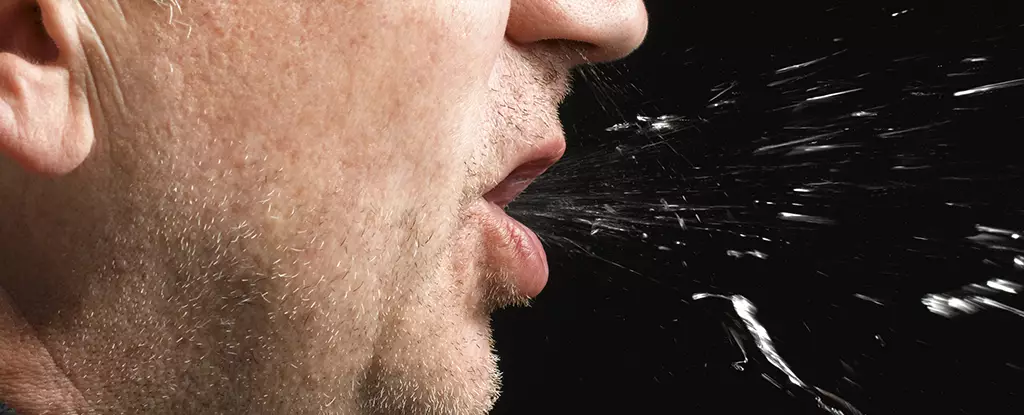As the world grapples with infectious diseases, understanding how viruses spread through tiny droplets has become a critical area of research. Recent studies underline the need for precise measurements of droplet dynamics, as these tiny spits can carry pathogens and significantly influence public health. Accurately modeling how far and how fast these droplets travel grants health authorities the insights necessary to develop effective mitigation strategies. The reliability of such models hinges on rigorous scientific inquiry—a commitment that researchers in France have exemplified in their latest experiments.
Innovative Techniques Provide Clarity
In an ambitious study, a cohort of 23 volunteers participated in a series of lab-based experiments designed to quantify how far saliva droplets travel during various forms of exhalation, including speaking, coughing, and normal breathing. Armed with advanced technology known as the Interferometric Laser Imaging for Droplet Sizing (ILIDS), researchers employed high-speed cameras to capture droplet size and velocity in real time. Just as a prism reveals the spectrum of colors hidden in white light, this innovative imaging technique offers a clearer understanding of droplet dynamics.
According to the research, the droplets produced ranged dramatically in size—from as little as 2 micrometers (µm) up to 60 µm, especially during coughing. Breathing yielded a smaller droplet size range, but in both cases, the implications are significant. The precision of these measurements is pivotal as it informs public health recommendations on how to decrease the risk of widespread contagion.
Mask Effectiveness: A Vital Protective Layer
Among the encouraging findings from the experiments was the significant role that masks play in reducing droplet transmission. The testing revealed that wearing tissue or surgical masks can block anywhere from 74% to a remarkable 86% of respiratory droplets across various forms of exhalation. This crucial insight underscores the importance of mask-wearing—an often-debated measure—while reinforcing the notion that community compliance can materially impact public health outcomes.
However, the study also revealed a striking variability in droplet size and velocity among the volunteers, echoing the idea that some individuals might be ‘superspreaders,’ capable of transmitting infections more effectively than their counterparts. This variability raises questions about universal mask guidelines and suggests the need for more customized recommendations based on individual characteristics, such as facial structure, which can affect how well masks fit and perform.
Uncharted Territory: Further Research Required
While the findings are illuminating, they also reveal the complexities of disease transmission phenomena that remain to be fully understood. The researchers point to a need for further exploration, particularly regarding how differences among volunteers—such as behavioral factors and environmental conditions—affect droplet emission. This acknowledgment of variability is crucial; it challenges any oversimplified narratives about disease transmission and emphasizes the nuances in human behavior and physiology.
More extensive studies, incorporating a broader volunteer base and various environmental scenarios, are on the horizon. This ambition is essential for tailoring guidelines about mask usage and other preventive measures. As the complexities of infection dynamics are unraveled, it is apparent that our approaches will need continual adaptation.
The journey toward understanding droplet dynamics is only beginning. The newly analyzed data not only advances our scientific framework but also opens the door for impactful public health strategies. The urgency of continued research cannot be overstated as we collectively navigate the challenges posed by infectious diseases. By revealing the minute details of how droplets travel and behave, this research has the potential to inspire innovative solutions and bolster our collective resilience against future outbreaks.

